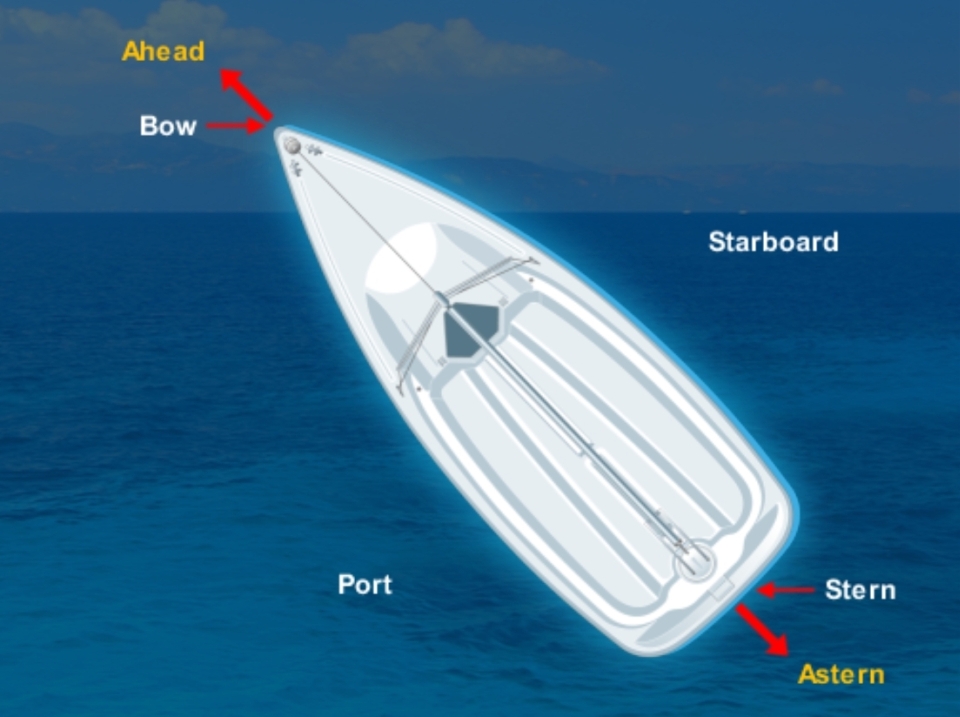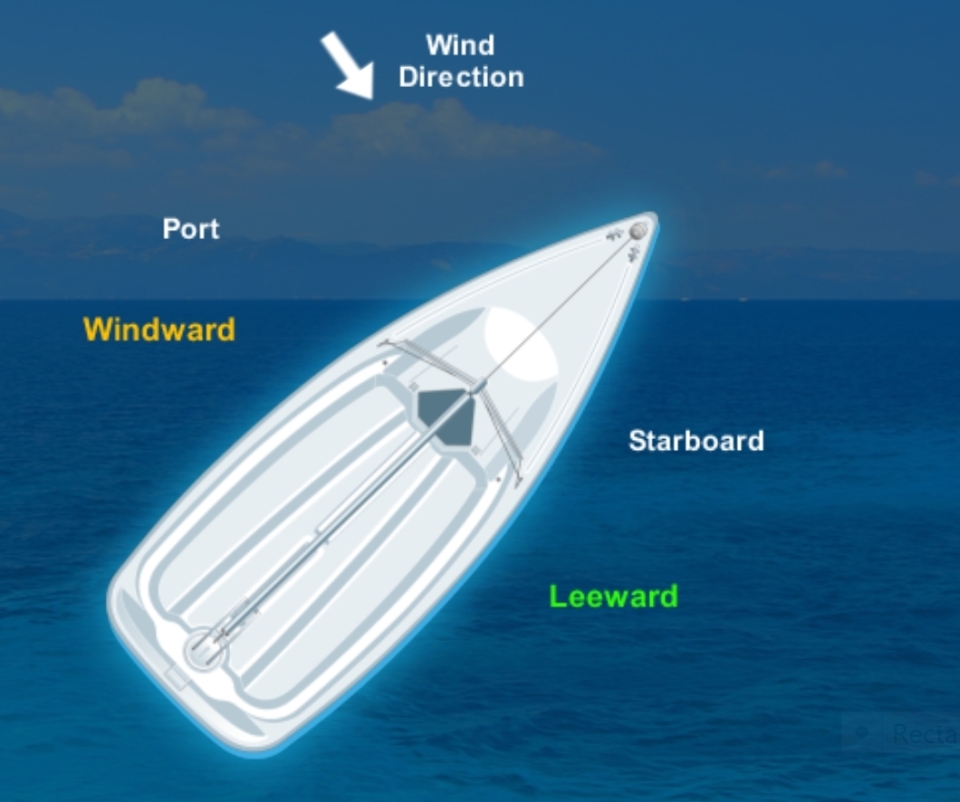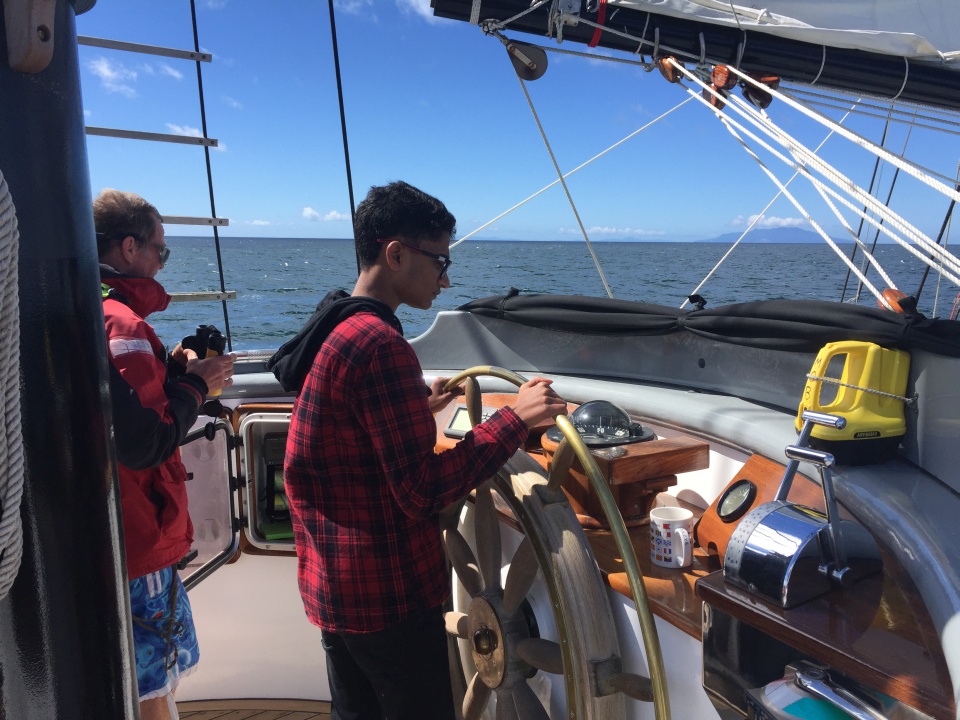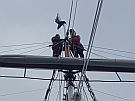Two thirds of the surface of the Earth is covered by ocean so sailing has allowed people to travel across the world and discover new places. To stay safe while sailing you need to know a few basic things.
What to wear
Weather can change quickly anywhere in New Zealand and if you are out on a boat you will feel these changes more. You need to plan for all types of weather and wear clothes that are comfortable and will keep you warm when wet.
When sailing you need to have:
- Life jacket
- Layers of clothing that can trap heat when it's cold but also be easily removed when its warm
- Clothing which remains warm when wet and does not absorb too much water
- Waterproof layers – jacket and trousers
- Hats – sun hat and warm hat options (it is useful to have a tie to secure your hat so you don’t lose it in the wind)
- Suitable footwear – this will depend on the size of the boat but most lace up shoes with a non-marking sole are good
- Sunscreen – even in winter!
- Sunglasses
- Be sure to talk to the skipper to see what to bring onboard
Water
It is important to drink enough water. If you do not drink enough your body will be less able to cope with the challenges of sailing and dehydration can make you feel more sea sick.
Directions
Just as we divide our world into north, south, east, and west, sailors have ways to describe locations on and around the smaller world of a boat.
Sailors call the right-hand side of the boat (when you are facing forward) the starboard side, and the left-hand side is called the port side. Since the words ‘left’ and ‘port’ both have four letters, it’s easy to remember that port means left.
The front, or forward end of a boat is called the bow while the back, or aft end, is the stern. An object located directly behind the boat is astern, and one in front of the boat is ahead.
Other terms to describe location depend on the direction of the wind. The side of the boat which is facing the wind is known as the windward side, while the downwind side of the boat is called the leeward side.
Wind
Wind powers a sailing boat so knowing about wind is very important. As a sailor, you need to know the direction and speed of the wind. You will need to watch for clues such as:
- The ripples and waves on the water
- Other sailboats
- Flags, smoke and anything else that is affected by the wind
Controlling your sail boat
Rather than being pushed along by the wind as a sailor you need to learn how to use the wind’s energy to get to where you want to go.
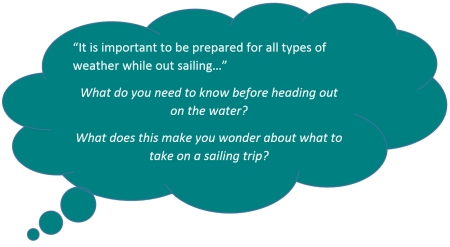 Although modern sailboats can sail upwind, they cannot sail directly into the wind or in an area about 45 degrees on either side of the wind. This is an area called the ‘no sail zone’. To travel to a destination directly upwind you will need to make a series of tacks to ‘zig-zag’ your way to your upwind destination.
Although modern sailboats can sail upwind, they cannot sail directly into the wind or in an area about 45 degrees on either side of the wind. This is an area called the ‘no sail zone’. To travel to a destination directly upwind you will need to make a series of tacks to ‘zig-zag’ your way to your upwind destination.
Rigging
Rigging is the name for the system of wire cables and ropes that both support the sails and allow them to be controlled. Sailing is about pulling lines in tighter or letting them out so the sails can be set at the best angle to the wind. This will allow the boat to either change direction or sail faster or slower. This process is known as trimming the sails.



